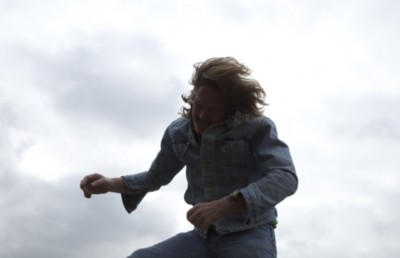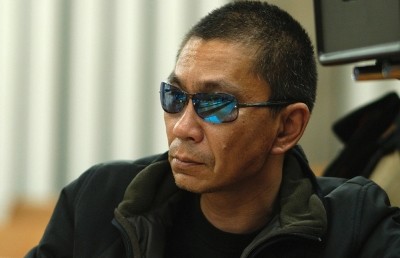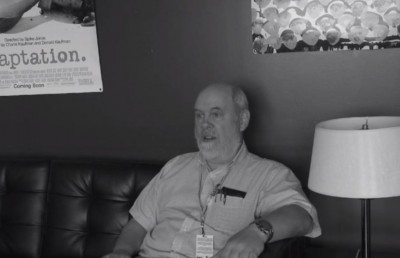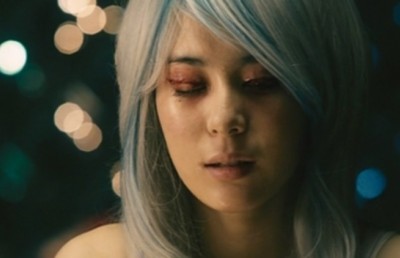The Tall Man as Sociological Horror
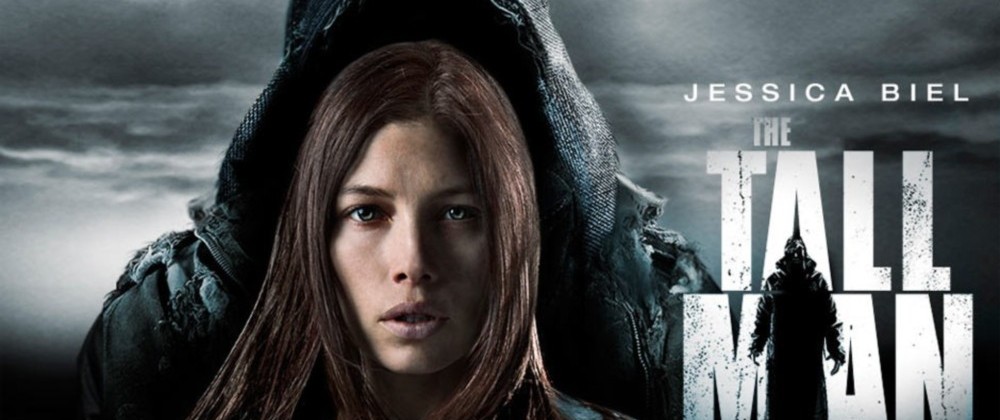
And he himself was tall and thin,
With sharp blue eyes, each like a pin,
And light loose hair, yet swarthy skin
No tuft on cheek nor beard on chin,
But lips where smile went out and in;
There was no guessing his kith and kin:
And nobody could enough admire
The tall man and his quaint attire
-Robert Browning “The Pied Piper of Hamelin”
The Fantasia International Film Festitval 2012 opened up with a bang with a selection of films from around the world, including Pascal Laugier’s Canadian/US production, The Tall Man. The film joined the ranks of a number of horror films from North America including the coming of age horror romp Excision, the highly anticipated anthology film V/H/S, mumble-core genre-bender Toad Road, and Canadian comedy-horror, A Little Bit Zombie. When I heard that Pascal Laugier’s new film, The Tall Man (2012), would be playing at the Fantasia Film Festival, I knew it was going on my list of “must see” films. I am a fan of the blood-soaked elegance of Martyrs (2008), so I was interested to see what Laugier had come up with for his latest offering. Though The Tall Man may be touted as a horror film, do not expect the same gory, psychological madness of Martyrs. Quite the opposite. Indeed, if I were to classify The Tall Man in any genre, I would label it as a drama/crime thriller rather than a horror film. The film twists and turns its way through a warped pied-piperesque narrative, rooted in overt social commentary that questions the very nature of how our society is ordered. This essay explains how The Tall Man utilizes the tropes of the Pied Piper tale as a way to lead its viewers through its class and economic commentary. Please be advised that if you have not seen the film, this essay is filled with spoilers!
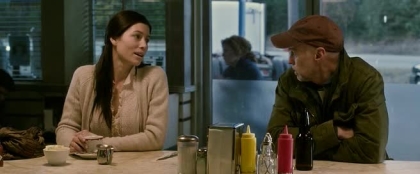
Julia in her community
The Tall Man contains several elements that relate to Robert Browning’s telling of the tale of the Pied Piper. Though there are no rats running rampant through the town of Cold Rock, the first three quarters of the film builds an urban legend around a figure reminiscent of the erstwhile piper: the tall man. For those unfamiliar with the tale of the Pied Piper, it is a story of revenge that plays upon one of society’s greatest collective fears—the harming of children. The villagers of Hamelin hire the Piper to rid their town of rats, but refuse to pay him once he succeeds. As punishment the Piper enchants the children of the village with his flute playing and leads them into the mountains. The Tall Man borrows elements from this tale, creating its own pied piper figure in what the townspeople refer to as “the Tall Man.”
In order to fully appreciate the urban legend that forms the backbone of the film, it is necessary to have a cursory understanding of the original pied piper legend. 1 Browning’s poem allows for the idea that the Pied Piper was called to deal with the town’s rat problem. The idea of a rat infestation was only added to the legend of the piper in the 16th century in order to expand it into a full narrative that addressed real social concerns. The Pied Piper is a figure that grew as a myth surrounding real events—a supernatural way to explain the real disappearance of children in the 13th century. The story is often regarded as a metaphor for the plague that swept across Europe (Thompson 571), killing many children. Previously, the tale only told of the unexplained disappearances of over one hundred children from the town of Hamelin—making it an example of how folk-stories are adapted to fit changing social concerns.
So too, in the film, a mythical figure is not behind the vanishing children Cold Rock. 2 Rather, the Tall Man is constructed as a way for the townspeople to explain events that are so terrible and unfathomable that they can only be explained through a supernatural lens. In Laugier’s film, the townspeople referring to the mysterious figure that makes the children vanish from the town as “the tall man” is reminiscent of Browning’s poem, which refers to the piper as “tall and thin . . . the tall man” (The Pied Piper of Hamelin 14). In the opening scenes of the film, the narrator (Jodelle Ferland), describes the tall man as “an ancient legend, something from a book of fairy tales or an old song” (16:44), suggesting the film’s link to old stories such as the Pied Piper. The film borrows elements from the legend of the Pied Piper to address modern social concerns—namely the “plague” of economic recession.
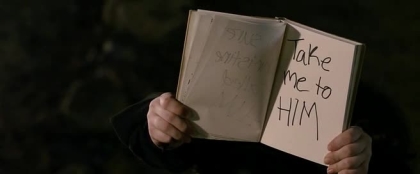
The Myth of the Tall Man
The revelation that the perpetrator is not the mythical Tall Man reveals how reliant the broken people of Cold Rock are on myth to explain their circumstances. The situation of these people is so dire, it seems impossible to attribute their extremely impoverished state to anything natural or “real.” Though not all residents are convinced of the existence of the Tall Man, it is the predominant belief of the residences. The myth exists as a distraction to the very real economic problems that surround the town. Jenny, through the use of voice-over narration, outlines the economic destitution of her town, but immediately dismisses it as secondary to the issue of the missing children—rather than drawing a connection between the two. This indicates that though the impoverished state of the townspeople is the cause of the loss of their children, no one makes the connection. In one particularly potent moment, Julia (Jessica Biel) speaks of the tall man, stating that, “all of Cold Rock chose that name.” In this sense the tall man legend is indicative of the use of myth as means to explain social hardship. Instead of facing the reality of economic destitution, the town’s folk create a myth that maintains the status quo of their existence, whilst placing the blame on external factors. 3
To understand this, we need to first examine the film’s overarching theme of economics and poverty. The Tall Man is divided into three acts: it begins in a setting that easily accompanies economic recession – the images of a nearly abandoned town left to rot after a mine closes, the weathered and forlorn faces of the residents, a pervasive air of gloom that settles like dust over the impoverished settlement, and glimpses of domestic violence and drug addiction. The film’s beginning places the town’s economic state side by side with its mysterious narrative, making the two inseparable from one another. Jenny’s opening narration describes the town as being “dead for six years” and the “lack of jobs, the lack of money, the lack of everything” (3:25) as the camera pans over the desolate streets of a soon-to-be ghost town. The camera wanders between the empty buildings, offset by the vast expanse of wilderness that hangs heavy over the setting, as Jenny moves on to suggest that the town’s decay is actually due to the rash of children disappearing. But despite this accusation of super-natural intervention, it is impossible to view this town as distinct from so many other small, economically deprived towns that have become the poster children for the industrial and economic downfall of the “American heartland”. A town beset with economic woe would resonate clearly with North American audiences whose landscape is littered with such places, and whose ideas of class and opportunity are so firmly linked to economic conditions.
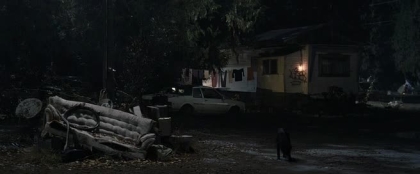
The town in economic destitution
It is clear that Cold Rock is a place of poverty, dashed hopes, and failed opportunity. But our perception of the impoverished town is not so straight forward. The scene in the café where Julia is brought after being found bloodied and bruised by Lieutenant Dodd complicates the idea the viewer has of the impoverished town. Upon first encountering this scene, the townspeople seem menacing and strange. We are led to believe that they have something to do with the missing children; they pursue Julia in the fashion of a torch-bearing mob. It is only later when the twist regarding the tall man is revealed that the scene reads more as a showcase of how, despite their economic woes, the people of Cold Rock are bound together in an attempt to protect their future.
The once prosperous Cold Rock decays in the shadow of the closed mine—a reminder of industrial capitalism’s power to both giveth and taketh. This mine is central to the film’s narrative because it links the dormant economy and all its accompanying issues to the film’s mystery of the missing children. It is through the abandoned mines that the “tall man” leads the children into their new lives. As Browning’s narrative poem goes:
bq. as they reached the mountain-side / A wondrous portal opened wide / As if a cavern was suddenly hollowed / And the Piper advanced and the children followed / And when all were in to the very last / The door in the mountain side shut fast” (43).
Only one child is left after this, to describe how the piper led the children to a “joyous land” (43). In the film, this child is Jenny (Jodelle Ferland) who, up until the film’s climax, has been witness to the disappearance of her peers and knows that they are being led to a life of privilege.
This concept of leading children to a “joyous land” is at the center of the film’s critique. Julia, as the film’s piper, has specific, class-oriented ideas on where the best place is for children to grow up. She has spent her adult life helping children, particularly in developing nations. After seeing children living in a variety of horrible conditions, she is overcome with a desire to help any child that she considers to be living in less than ideal circumstances. For her, this includes the entire child population of Cold Rock. Jenny’s continuing narration paints the town of Cold Rock as a place where unwanted children are born, where “people just managed . . . it may have been a bit sad” she continues, “but it was just good sense, because a lot worse things were happening when it came to the children” (8:30). Children are taken away from the parents for reasons such as possible abuse, or simply for the fact that they are not being provided for in a way that a child in a more privileged environment would be. Julia describes the downfall of the town and its affects on the children by saying that, “Cold Rock was dignified then” (1:13:30) – speaking of the time in which her husband was a doctor in Cold Rock. “And then the mine shut down, and morale declined, and he was gone and the children were paying the price . . . they were suffering so much, we had to do something ” (1:12:00). It is through this practice that the film raises difficult moral questions. Is kidnapping justified when it is in the best interest of the child? Is any one person truly capable of determining what is in a child’s best interest? And is it fair to punish parents for economic factors that are beyond their control? When Jenny is finally taken to join the other children in the “joyous land” she discovers (along with the audience) that it is not what they imagined it would be. In her closing remarks Jenny addresses the audience with these words: “every morning I wake up to the thought of giving it all up and running back home but I remind myself I wanted this life . . . I guess it’s better this way right? Right?” As she looks into the camera the viewer is forced to question whether being moved into a wealthy home and given all the privileges that money can buy is necessarily the “right” path.
In an interview, Laugier describes the film as a “sad reflection of the social castes system” (AICN). “For me” he says, “I’m trying . . . to depict human relationships and the way our society is created, organized, and the whole social class system has not changed a single bit since the nineteenth century” (AICN).
The film asks some hard questions about the fate of children living in such an environment. Are they less cared for and less loved in these situations? Is it our right to judge? Two characters in particular epitomize these differing moral stances. There is Julia who, during the second act is revealed to be the one who has been making the children disappear. She becomes the Tall Man, she becomes what the townspeople have named her. The audience believes that Julia has kidnapped the children and made them disappear into the mines and by the end of the act, believe that she has killed them. In one of the most powerful monologues of the film, she attempts to explain her actions:
It’s just the same everywhere, the defeat, and the pain, it’s a cycle . . .. the system is broken, it doesn’t work, there’s nowhere to turn, there’s no support, I’ve seen it all over the world: it’s just easier to give up, I’m not any better than you Mrs. Johnson, I’ve just seen more. It’s not a matter of being a good person or being a bad person, it’s about how you cope. We’re so limited. But the eyes of every child are filled with potential and hope. And we should embrace and nourish that potential but we don’t we continue to make the same mistakes we continue to let the children grow up broken and lost just like their parents. We have to break the cycle it has to be a priority but it’s not. That’s what I’ve been trying to do, that’s what I’ve done everywhere and what did I change? Nothing.
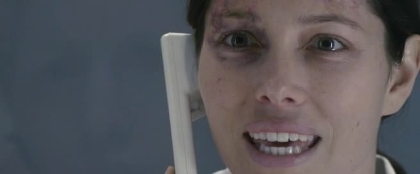
The well-meaning Julia
The other is Mrs. Johnson (Colleen Wheeler) who has been driven to the brink of madness by the disappearance of her child. Mrs. Johnson acts as the counter-point to Julia’s doctrine, and makes us question whether poverty is a strong enough reason to separate a child from their parent. The grief of Mrs. Johnson: “it’s unbearable, missing him.” This scene is meant to make the viewer sympathize with her. “I know I live in a dump, I don’t have a job, and life for me is hard but I would still die for him” say’s Mrs. Johnson, and her comment complicates the idea that children are better off in a more privileged lifestyle. She recognizes the fact that she does not have the most ideal life but her fierce love of her son throws into question what is most important when raising children.
The words of Mrs. Johnson are set against Julia’s comment that the children “had everything they could possibly need,” indicating the two women’s ideas of parenting are divided by economic wealth: Mrs. Johnson believes in the strength of family and love whilst Julia believes that material wealth is the key. The question of which one of these women is in the right is worked throughout the film. In an earlier scene, before we are aware that Julia is the Pied Piper figure, a radio sermon is being played at top volume in her kitchen. “Pastor, I do good works,” says the radio voice. “I take care of my family, I look after my friends, –I looked him square in the eye and said that’s marvelous, tell the devil about it cause you’re going to hell” (23:45). Not only is this a foreshadowing of the revelation that it is Julia and her husband who are making the children disappear, but it serves to asks the question, what is right and what is wrong? The person who told the pastor of his “good works” clearly thought they were in the right but despite this, the pastor claims they are going to hell. Though in their minds, Julia, her husband, and Christine believe they are doing good works, their actions are rooted in classist beliefs that do not allow for the idea that anyone but a materially privileged person can care properly for a child. After viewing the film and thinking back on that radio broadcast we can ask ourselves if their actions make them saints or devils? Are they helping or causing more harm?
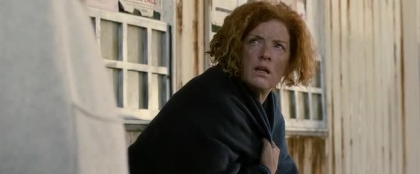
The distraught Mrs. Johnson
As the audience dwells on these contradicting ideas, the film moves forward into the third and final act. Once again we join Jenny who, after witnessing a particularly brutal showdown between her mother and stepfather, runs away where she is snatched up by a mysterious figure in black. Is this the real Tall Man? The Myth come to life? The truth is not so simple. When we see Jenny again, she has been renamed Vera and has been adopted by a wealthy looking woman. We learn that Julia’s crusade is not isolated to Cold Rock, it is the root of a (presumably) large organization that leads children away from their underprivileged lives into an environment where they will never be wanting. Jenny’s comments on the three mothers that she has had in her life (her real mother, Julia, and the wealthy woman who adopts her):
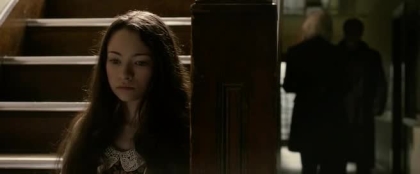
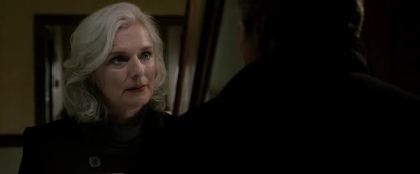
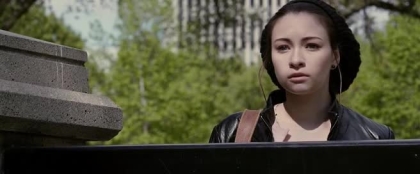
Jenny as the ‘New’ Vera ponders her ‘New’ Rich Mother
My first mother was a good woman, hardworking, generous, affectionate, we talked, we shared, we laughed, but then it stopped. She couldn’t talk to us anymore, about men, about her dreams, about her pain. My first mother loved me and I loved my first mother. My second mother only mothered me for a short time. I often think about her. I try to imagine the moment she had in the tunnel, giving one last kid to her husband. Did he implore her to run away with him? Or did they both know someone had to stay? Be the monster, pay the price, and protect their secret. Whether she was a good person or not, I’m still not sure. But my second mother loved me and I loved my second mother. My third mother is teaching me about the bigger world, she says knowledge is the key to open all my doors. So I stay focused, I observe, and I work hard. I listen to what she says, I want to please her. My third mother loves me, and I love my third mother.”
This outline that Jenny provides of her three mothers draws attention the fact that all these women provided her something, regardless of their economic status. After Jenny is taken into her new life, the camera revisits Cold Rock: still desolate and still with an air of hopelessness. It lingers on an assortment of children who play and loiter in clothing that looks worse for wear amidst dilapidated homes and dusty streets.
In the end, The Tall Man offers no solutions to the questions it poses. Rather, it leaves us to dwell on the issues explored and to come to our own conclusions. Was Julia right or wrong? Is this one of those questions that cannot be answered in definitive black and white terms? The very fact that The Tall Man centers on a socially constructed myth is evidence that it is skeptical of the possibility of easy answers. The film is a modern retelling of the Pied Piper legend executed in such a way as to explore the relationship between class and economics and their effect on children. This relationship is influenced by such a diverse and seemingly mysterious range of factors it appears unreal, making the medium of myth the most viable way to explain it.
Works Cited
“AICN HORROR Talks with Writer/director Pascal Laugier.” Aint It Cool News. N.p., n.d. Web. 21 May 2013.
Browning, Robert. The Pied Piper of Hamelin. New York: Lothrop, Lee & Shepard, 1986. Print.
Thompson, James Westfall. “The Aftermath of the Black Death and the Aftermath of the Great War.” American Journal of Sociology 26.5 (1921): 565-72. Print.
Notes



